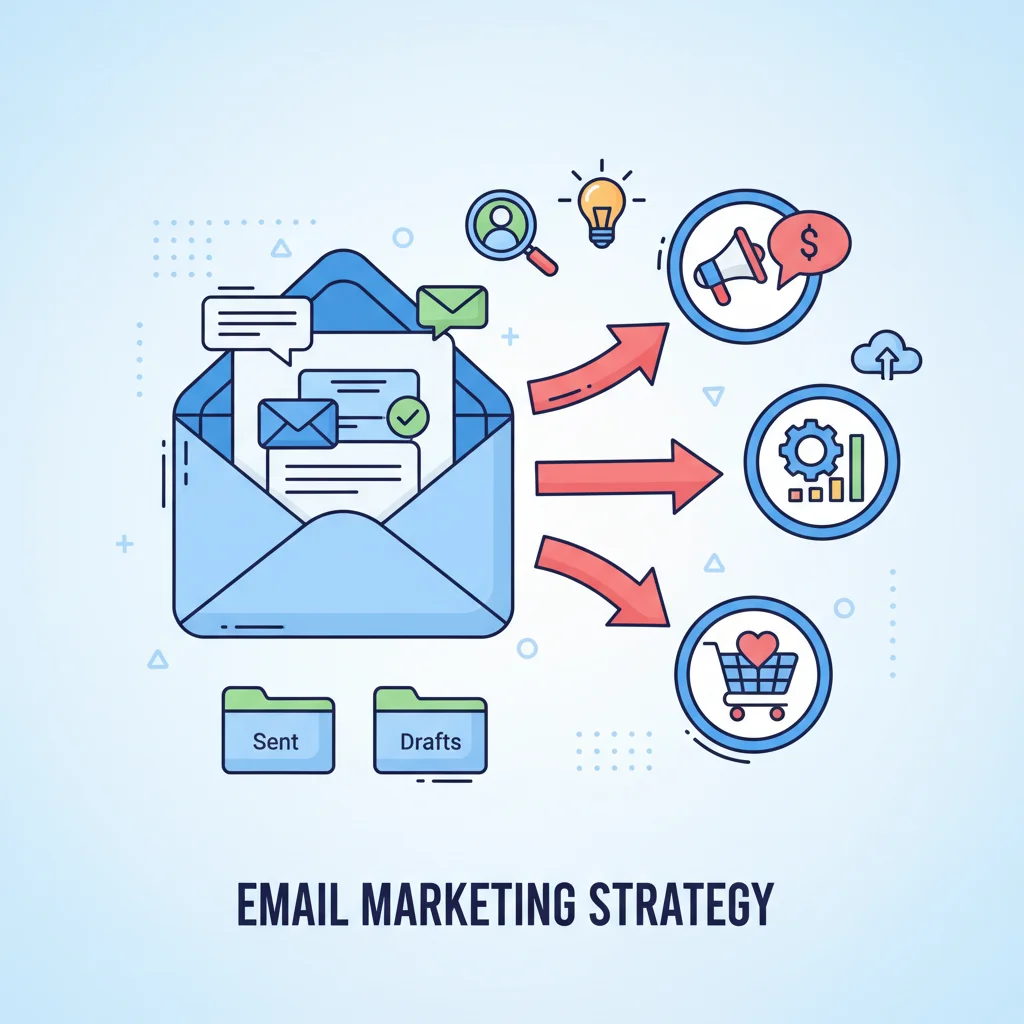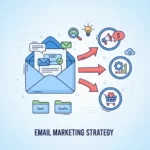Now Reading: Hard vs Soft Email Bounce Differences: Save Your Sender Rep
-
01
Hard vs Soft Email Bounce Differences: Save Your Sender Rep
Hard vs Soft Email Bounce Differences: Save Your Sender Rep

Did you know that 28% of email lists deteriorate every single year? That’s more than a quarter of your contacts potentially causing bounces! Understanding hard vs soft email bounce differences isn’t just nice-to-have knowledge-it’s essential for maintaining your sender reputation and ensuring your messages actually reach your audience.
Key Takeaways
Hard vs soft email bounce differences explained:
- Hard bounces are permanent delivery failures where emails can’t be delivered due to permanent issues like invalid email addresses, non-existent domains, or blocked servers. These contacts should be immediately removed from your list.
- Soft bounces are temporary delivery failures where the email reached the recipient’s server but was rejected due to issues like full mailboxes, server unavailability, or message size. These typically resolve on their own.
- Hard bounces damage your sender reputation more severely than soft bounces and require immediate action.
- Most ESPs automatically handle bounce management by removing hard bounces and retrying soft bounces for a set period (typically 36-72 hours).
- Regular list cleaning and monitoring bounce rates are essential for maintaining email deliverability.
What Causes Hard Email Bounces?
When an email hard bounces, it’s like running into a brick wall-there’s no getting through. Hard bounces are permanent delivery failures, and they’re usually a sign that something fundamental is wrong with your recipient’s email address.
Invalid or non-existent email addresses
The most common cause of hard bounces is simply that the email address doesn’t exist. This could happen for several reasons:
- The recipient closed their account
- You have a typo in the email address (hello@gmial.com instead of hello@gmail.com)
- Someone gave you a fake email address
- The domain name doesn’t exist anymore
I once sent a campaign to a list that hadn’t been cleaned in two years-big mistake! Almost 15% of the addresses hard bounced because people had changed jobs or email providers.
Domain issues
Sometimes the problem isn’t with the specific address but with the entire domain. If a company goes out of business or changes its domain name, all those email addresses instantly become invalid.
Domain-related hard bounces can also happen due to:
- DNS misconfigurations
- Typos in the domain name (yourcompany.con instead of yourcompany.com)
- The domain has expired
Blocked by recipient’s server
Some hard bounces happen because the recipient’s server has actively decided to block your messages. This is particularly common with:
- Corporate email servers with strict security policies
- Government or institutional domains
- Servers that have blacklisted your domain or IP address
If you’re seeing a pattern of hard bounces from specific domains (like all @bigcorporation.com addresses), it might be worth investigating if you’ve been blacklisted or if their security settings are rejecting your emails.
Authentication failures
Modern email systems use several authentication methods to verify that you are who you claim to be. If your emails fail these checks, they might hard bounce. Common authentication issues include:
- Failed SPF (Sender Policy Framework) checks
- Failed DKIM (DomainKeys Identified Mail) validation
- Missing or incorrect DMARC (Domain-based Message Authentication) records
Pro tip: Setting up proper email authentication isn’t just nice to have-it’s essential for avoiding hard bounces, especially when sending to corporate domains.
Useful Articles:
What Causes Soft Email Bounces?
Unlike their “hard” cousins, soft bounces are temporary hiccups in delivery. Think of them as “try again later” messages rather than outright rejections.
Temporary server issues
Servers can have bad days too! Sometimes a recipient’s mail server is:
- Temporarily down for maintenance
- Experiencing technical difficulties
- Overloaded with traffic
In these cases, the server isn’t rejecting your email permanently-it just can’t accept it right now.
Full mailboxes
Yes, even in this age of virtually unlimited storage, some people still have full inboxes. This is more common with:
- Older email systems with storage limits
- Abandoned email accounts that nobody checks
- Corporate accounts with strict storage quotas
When you get a “mailbox full” soft bounce, it might be worth considering whether this is an active account. If someone hasn’t cleared their inbox in months, they probably aren’t reading marketing emails anyway!
Message size issues
Your beautiful, image-heavy newsletter might be too much for some email servers to handle. Common size-related soft bounce issues include:
- Emails with large attachments
- Newsletters with many high-resolution images
- Messages with complex HTML that exceed size limits
I learned this lesson the hard way when I sent a campaign with a 10MB product catalog attached. The bounce rate was through the roof!
Content filtering
Sometimes your email reaches the server but gets rejected because something in your content triggered a filter:
- Spam-like language (too many exclamation points!!!)
- Excessive use of dollar signs ($$$ SALE $$$)
- Certain keywords that trigger spam filters
Temporary blacklisting
Your IP address or domain might be temporarily blacklisted due to:
- A sudden increase in sending volume
- Previous complaints from recipients
- Association with IPs that have sent spam
How Email Service Providers Handle Bounces
Understanding how your ESP (Email Service Provider) manages bounces can save you a lot of headaches.
Hard bounce handling
Most ESPs take hard bounces very seriously because they can damage your sender reputation. When a hard bounce occurs:
- The email address is automatically removed from your active list
- The contact is often “blocklisted” in the ESP’s system
- You’ll see the hard bounce reported in your campaign analytics
- Some ESPs will prevent you from uploading the same address again
Important: Don’t try to “work around” your ESP’s hard bounce management. If they’ve removed an address, there’s usually a good reason!
Soft bounce handling
Soft bounces get more lenient treatment:
- Most ESPs will retry delivery for 36-72 hours
- The address remains on your active list (initially)
- After multiple consecutive soft bounces (typically 3-4), many ESPs will treat it as a hard bounce
- You’ll see soft bounces reported separately in your analytics
Brevo, for example, continues attempting delivery for 36 hours before marking an email as a soft bounce. If an address soft bounces four consecutive times, they’ll blocklist it-treating it essentially like a hard bounce.
Bounce codes and messages
When an email bounces, the receiving server sends back a specific code and message explaining why. These follow standard formats:
- 5XX codes typically indicate hard bounces (permanent failures)
- 4XX codes typically indicate soft bounces (temporary failures)
For example:
- 550: Mailbox unavailable (hard bounce)
- 421: Service not available (soft bounce)
Most ESPs translate these technical codes into more user-friendly explanations in your reports.
Useful Articles:
How Bounces Affect Your Sender Reputation
Your sender reputation is like your email credit score-and bounces can tank it fast.
Impact of hard bounces
Hard bounces are reputation killers:
- They signal to ISPs that you’re not maintaining your list
- High hard bounce rates can get your IP or domain blacklisted
- Some mailbox providers use hard bounce rates to determine if you’re a spammer
- Too many hard bounces can cause even your valid emails to land in spam folders
The industry standard: Keep your hard bounce rate below 0.5% for optimal deliverability.
Impact of soft bounces
Soft bounces are less damaging but still matter:
- Consistent soft bounces to the same addresses suggest poor list hygiene
- High soft bounce rates can trigger spam filters
- Repeated soft bounces waste sending resources
- They can eventually convert to hard bounces if not addressed
Monitoring bounce metrics
Smart email marketers keep a close eye on:
- Overall bounce rate (ideally under 2%)
- Hard bounce rate (ideally under 0.5%)
- Soft bounce rate trends
- Bounce patterns by domain or subscriber segment
Most ESPs provide these metrics in your campaign reports. Pay attention to them!
Best Practices to Reduce Email Bounces
Now for the practical stuff-how to keep those bounce rates low and your deliverability high.
Clean your email list regularly
This is the single most important thing you can do:
- Remove inactive subscribers (no opens or clicks in 6+ months)
- Verify email addresses before sending campaigns
- Use double opt-in to ensure addresses are valid from the start
- Consider using an email verification service like ZeroBounce or MailerCheck
I clean my lists quarterly, and it’s made a huge difference in my deliverability rates.
Authenticate your emails properly
Email authentication isn’t just techie stuff-it directly impacts bounces:
- Set up SPF records to verify sending servers
- Implement DKIM to digitally sign your emails
- Configure DMARC to tell receiving servers how to handle authentication failures
- Use a custom domain instead of a free email service
Send consistently
Erratic sending patterns can trigger bounces:
- Maintain a consistent sending schedule
- Avoid sudden massive increases in volume
- Warm up new IP addresses gradually
- Don’t let your list go cold by neglecting to email for months
Optimize your content
What’s in your emails matters too:
- Avoid spam trigger words (“free,” “guaranteed,” “no risk”)
- Maintain a good text-to-image ratio
- Don’t use excessive punctuation (!!!) or ALL CAPS
- Test your emails with spam checking tools before sending
Segment your audience
Not all subscribers are the same:
- Segment by engagement level
- Send different content to different segments
- Consider sending less frequently to less engaged subscribers
- Target content based on subscriber interests
Handle bounces promptly
When bounces do happen:
- Remove hard bounces immediately
- Monitor addresses that soft bounce repeatedly
- Investigate patterns in bounce reasons
- Update your list based on bounce feedback
Useful Articles:
How to Interpret Bounce Messages
Bounce messages can be cryptic, but understanding them helps you fix the underlying issues.
Common hard bounce messages
These typically indicate permanent problems:
- “User unknown” or “No such user”: The email address doesn’t exist
- “Domain not found”: The domain part of the email address is invalid
- “Rejected for policy reasons”: The recipient’s server has blocked your messages
- “Mailbox disabled”: The account has been deactivated
Common soft bounce messages
These suggest temporary issues:
- “Mailbox full”: The recipient’s inbox is at capacity
- “Message too large”: Your email exceeds size limits
- “Temporary failure”: General server issues
- “Greylisted”: The server is temporarily deferring delivery as an anti-spam measure
Deciphering technical bounce codes
Some bounce messages include specific SMTP codes:
- 550: Usually indicates a hard bounce (user doesn’t exist)
- 552: Mailbox full (soft bounce)
- 421: Service temporarily unavailable (soft bounce)
- 554: Transaction failed (often spam-related)
Tools and Techniques for Managing Bounces
The right tools make bounce management much easier.
Email verification services
These services check email validity before you send:
- ZeroBounce
- BriteVerify
- NeverBounce
- MailerCheck
They can identify:
- Invalid addresses
- Disposable email addresses
- Role-based emails (info@, support@)
- Spam traps
ESP bounce management features
Most good email service providers offer:
- Automatic bounce handling
- Bounce categorization
- Detailed bounce reports
- List cleaning recommendations
Preference centers
Give subscribers control over their information:
- Allow them to update their email address
- Let them choose content preferences
- Provide frequency options
- Make unsubscribing easy
This reduces the chance of them abandoning an email address without telling you.
Bounce monitoring tools
For advanced users, consider:
- Dedicated deliverability monitoring services
- Blacklist monitoring tools
- SMTP diagnostic tools
- Email headers analysis
Special Cases in Email Bounces
Not all bounce situations are straightforward. Here are some special cases to be aware of.
Auto-responders vs. true bounces
Auto-responders (like “Out of Office” messages) can sometimes be confused with soft bounces, but they’re different:
- Auto-responders actually received your email successfully
- They don’t indicate a delivery problem
- Most modern ESPs can distinguish between them
- They shouldn’t count against your bounce rate
Role-based email addresses
Addresses like info@company.com, support@company.com, or admin@company.com often have:
- Higher bounce rates
- Lower engagement
- Multiple recipients
- Stricter filtering
Many email experts recommend avoiding role-based addresses in your marketing lists.
Spam complaints masquerading as bounces
Sometimes what looks like a bounce is actually a spam complaint:
- Some ISPs return a bounce-like message instead of forwarding spam complaints
- These can damage your reputation more than regular bounces
- They often require different remediation strategies
Temporary vs. permanent domain issues
Sometimes entire domains have issues:
- Corporate domain temporarily down (soft bounce)
- Company went out of business (hard bounce)
- Domain changed ownership (hard bounce)
- Domain experiencing technical issues (soft bounce)
Preventative Strategies for Reducing Bounce Rates
An ounce of prevention is worth a pound of cure when it comes to email bounces.
Double opt-in implementation
Double opt-in is your first defense against bounces:
- Requires email verification before subscription is complete
- Confirms the address is valid and accessible
- Reduces typos and fake addresses
- Improves overall list quality
Regular engagement campaigns
Keep your list active and clean:
- Send re-engagement campaigns to inactive subscribers
- Remove consistently unengaged contacts
- Reward active subscribers
- Track engagement metrics over time
List segmentation strategies
Not all subscribers should get the same treatment:
- Segment by engagement level
- Create different content for different segments
- Send more frequently to engaged subscribers
- Put less engaged subscribers on a re-engagement track
Email validation at collection points
Catch problems before they enter your system:
- Use real-time email validation on signup forms
- Implement basic syntax checking (does it have an @ symbol?)
- Check for common typos in domain names
- Reject obviously fake addresses
Sender reputation monitoring
Keep tabs on your sending reputation:
- Monitor your IP and domain reputation
- Check blacklists regularly
- Track spam complaint rates
- Use tools like Google Postmaster Tools or Microsoft SNDS
When to Remove Subscribers Based on Bounce Behavior
Knowing when to say goodbye to subscribers is crucial for list health.
Hard bounce removal policies
For hard bounces, the rule is simple:
- Remove after the first hard bounce
- Don’t attempt to send to these addresses again
- Update your original database if possible
- Consider investigating patterns if you see clusters of hard bounces
Soft bounce management timeline
For soft bounces, you need a policy:
- Most ESPs retry soft bounces for 24-72 hours
- Consider removing addresses that soft bounce 3-4 times consecutively
- Monitor addresses that soft bounce intermittently
- Set a threshold (e.g., 5 soft bounces in 30 days) for removal
Balancing list size vs. list quality
It’s tempting to keep every subscriber, but quality beats quantity:
- A smaller, engaged list performs better than a large, bouncy one
- Sending to invalid addresses wastes money
- Poor list quality damages deliverability for everyone
- Focus on engagement metrics, not just list size
Re-permission campaigns
Before removing borderline cases:
- Send a “We miss you” campaign
- Ask explicitly if they want to stay subscribed
- Offer an easy way to update their information
- Set clear expectations about what happens if they don’t respond
Understanding hard vs soft email bounce differences is essential for anyone serious about email marketing. Hard bounces represent permanent failures that require immediate removal from your list, while soft bounces are temporary hiccups that often resolve themselves. By properly managing both types, regularly cleaning your list, and implementing preventative strategies, you’ll maintain a healthy sender reputation and ensure your messages actually reach your audience. Remember-a smaller, engaged list will always outperform a large, bouncy one!





















